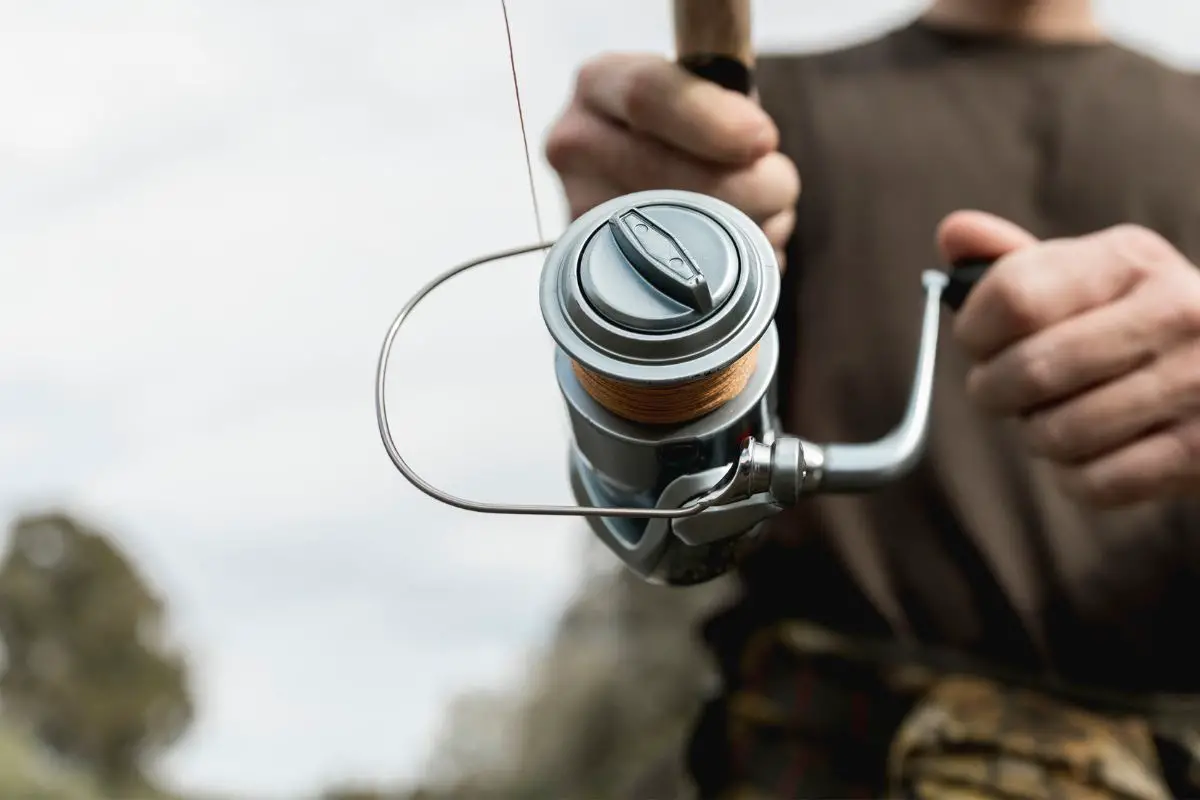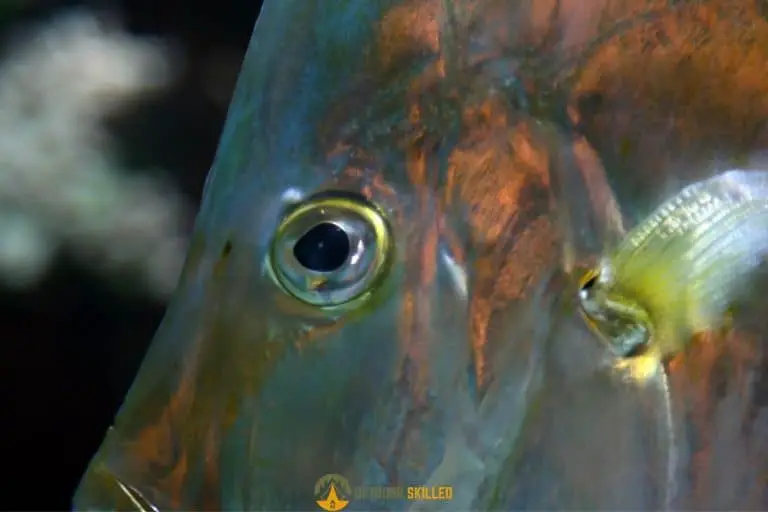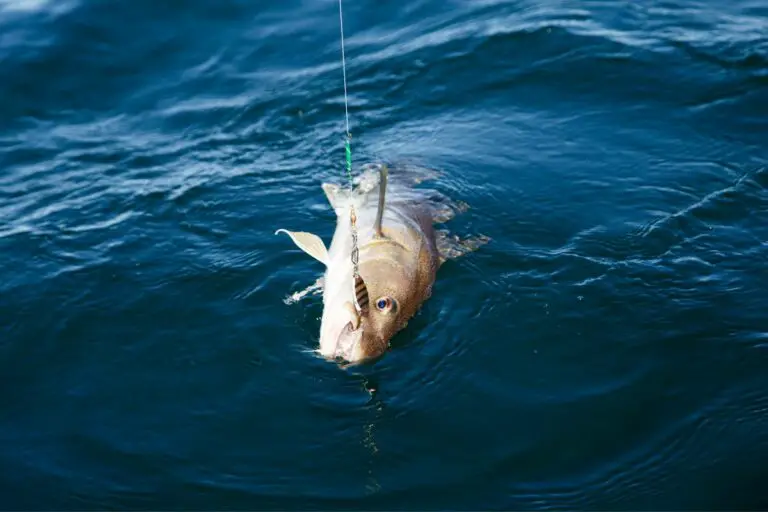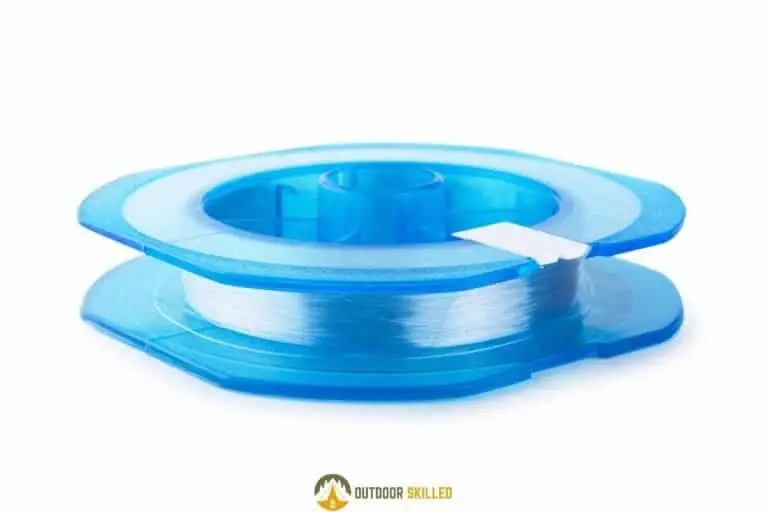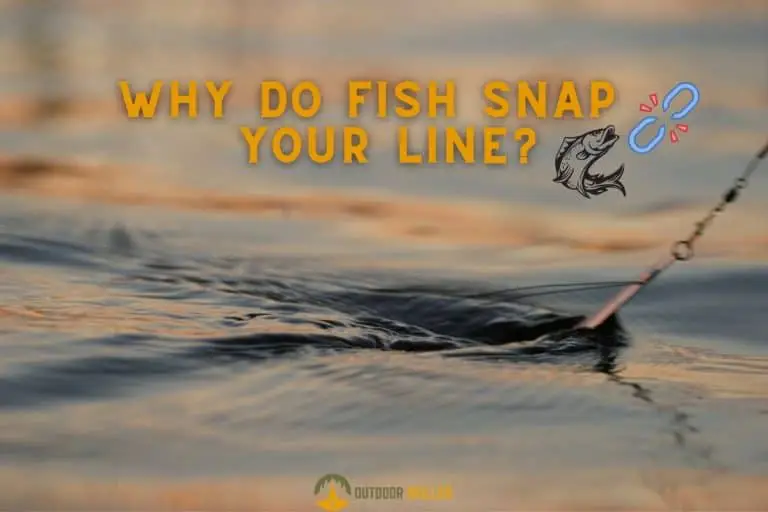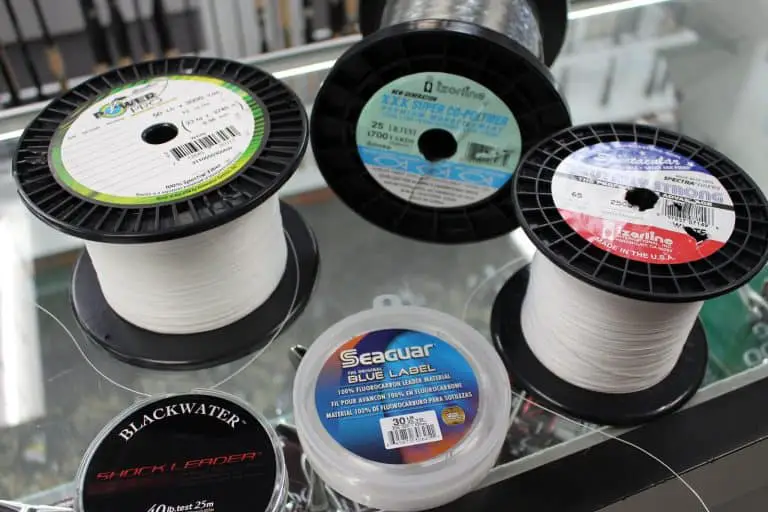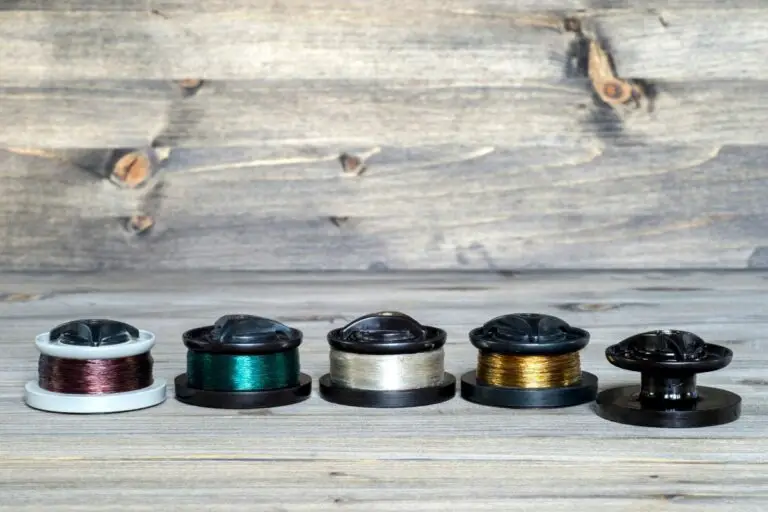Why Is Your Fishing Line Unspooling? The Main Causes and Solutions
One of the most irritating problems you might face when fishing is getting your fishing line unspooled. It’s important to understand why this happens in order to prevent it from happening on future trips.
So, why is your fishing line unspooling? Your fishing line might be unspooling because you’re not using the correct type of line or because you spooled an excessive amount of line on the reel. Problems with maintenance or line memory, such as coils, could also lead to the line unspooling.
Keep reading to learn more about the reasons why your line is unspooling and how to fix it quickly.
Table of Contents
Why Is Your Fishing Line Unspooling?
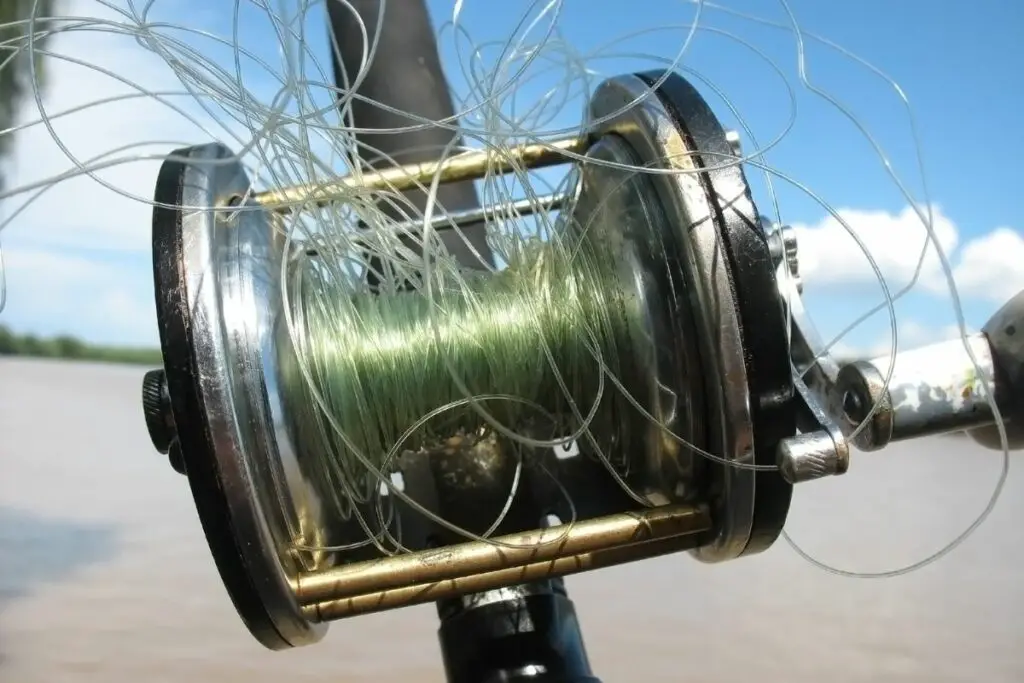
You may be wondering why your fishing line unspools often. This could happen because of five key reasons, which are:
- You loaded your spool with too much line or too heavy line.
- The fishing line developed too much memory.
- The fishing line is extra loose.
- You shut the bail with your reel rather than manually.
- Your bait started spinning.
Understanding why your line is unspooling will help you prevent the problem from happening in the future. So, let’s break down each one of these reasons in more detail:
The spool is loaded with too much line or too heavy line.
The main reason your fishing line might become unspooled or slips off the spool is that there just isn’t enough room for it to begin with.
Most spinning reels, unless specifically made for saltwater, cannot carry as much or as heavy of fishing line as baitcasting reels. So, overfilling your spool will cause your fishing line to unspool by itself.
It’s recommended to allow approximately a 1/8′′ space between your fishing line and the spool’s edge.
The fishing line has developed memory.
Some kinds of fishing lines, such as fluorocarbon lines, are known to develop high memory. This means that they have a tendency to become set in a certain form or curl up more easily.
If you leave the line on the spool for some time without fishing, it will take the form of the spool.
Here are some tips to reduce line memory as much as possible:
- Replace your old fishing lines regularly.
- Use a line conditioner to soften the line.
- Use the line from time to time, so the line does not have a chance to set too badly.
The fishing line is extra loose.
If the line is not spooled properly, it’ll be extra loose on the reel, which could lead the line to unspool more easily, particularly if you’re fishing on a windy day.
The bail on the reel was closed incorrectly.
Many beginners tend to close the bail on their spinning reels by rotating the handle. This could cause some problems with the line, which will lead it to unspool.
The problem is that if your line is loose and you seal close bail by rotating the handle, the loose line will create a loop on the spinning reel.
This loop will become knotted: it won’t rest properly on the spool and will be the first to unspool or get snagged.
Your bait started spinning.
Sometimes the bait might start spinning when you’re about to retrieve it. If the bait is too heavy, it’s likely to cause some line twists as it spins, which will lead to various problems, including unspooling.
Certain baits are heavier than others, so they’re more prone to spinning when upon retrieval. It’s usually recommended to attach a small swivel to your line as well as a leader to reduce the problem.
How To Prevent Fishing Line From Unspooling?
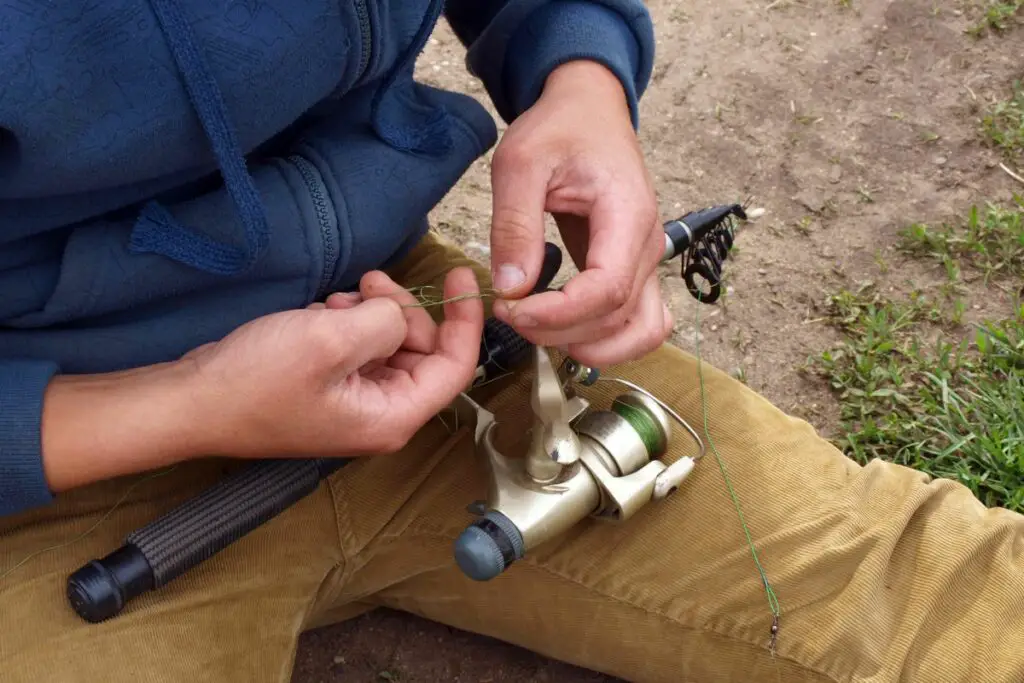
Here are some solutions to this problem and methods to avoid it in the future.
- Overloaded Spool: Overloading your spool is the most common reason for unspooling the fishing line. Make sure to leave at least 14 inches of spool visible while spooling the line to overcome this issue.
- Turning the handle on sliding drag: Avoid twisting the handle, particularly if the drag is sliding will help prevent your fishing line from unspooling.
- Attach fishing line properly: To attach the line properly and prevent it from unspooling, you need to place the fishing line spool on the ground with the label pointing up and the line sliding off the spool counter-clockwise. Make that no little coils or tangled parts form near the rod tip.
- Use the proper fishing line: You must consider the characteristics of the fishing line to ensure that you pick the line that goes well with your spool to prevent it from unspooling. For instance, spinning reels function best with a softer fishing line, such as a braided line. You can learn how to choose the right fishing line here.
- Properly spool the line: To prevent your line from unspooling, you need to properly spool the line. Carefully pay attention to how the fishing line falls off on both sides of the provided equipment. Next, throw a fishing line off the side with the least visible cooling. Then, before it hits the reel, apply the appropriate amount of pressure.
- Adjust the drag properly: Make sure that you adjust the drag properly in order to prevent your line from unspooling.
- Use a swivel on spinning baits: Using a swivel head, notably a snap-swivel, will stop the line from unspooling when using a spinning bait, as it is where you would immediately attach it to the bait.
- Straightening the twists immediately: The curling of fishing lines could potentially result in their unspooling. As a result, if your bait begins to rotate from the rod tip, you must detach it to avoid tangling.
- Keep an eye out for loops on the spool: To avoid your line from unspooling, make sure to keep an eye out for only loops on the spool. This can happen on fishing lines due to relaxation or the reel bail moving backward.
- A tangled fishing line should never be reeled in: When you see knotted fishing lines, stop reeling. It will simply complicate the problem. Separate the threads as soon as possible.
What Is the Correct Way To Spool A Fishing Line Onto A Reel?
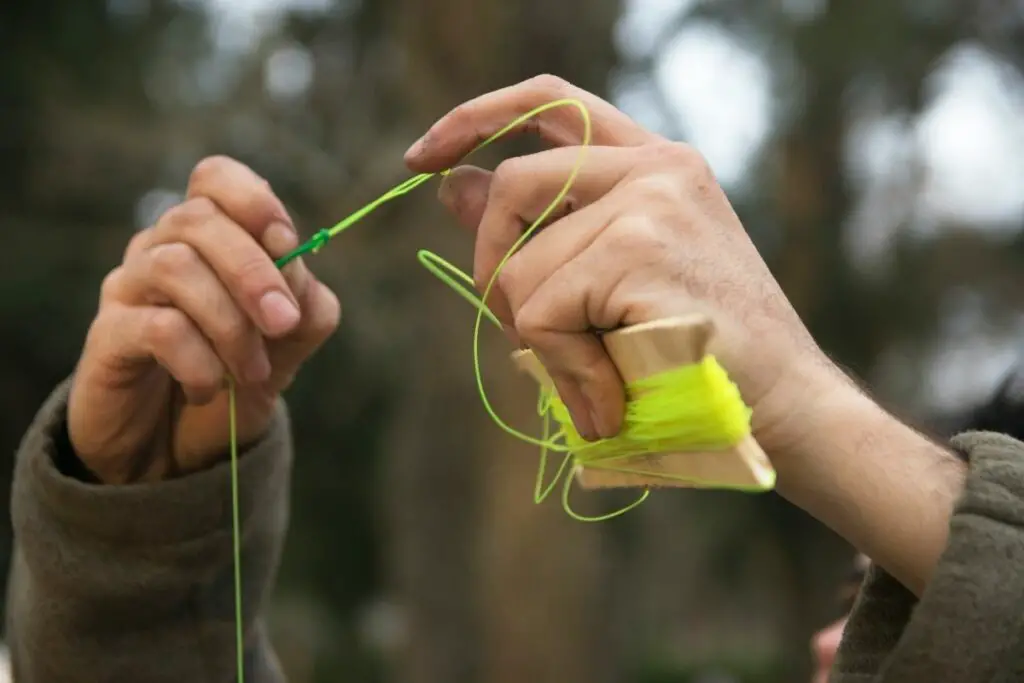
A correctly spooled spinning reel increases your chances of landing a big one on the sea. However, spooling your line incorrectly will result in knots or the line falling off the reel.
Here’s a step-by-step instruction on how to spool fishing line onto a reel:
- Take a spool of your preferred line and unwrap just enough to construct a little loop.
- Pass the line through the pole’s guides. Create a tiny loop. Then wrap the loop you’ve created around the reel.
- After that, make sure that the bail is open, and then tighten the slip knot and trim the tag end.
- Thoroughly fill your spool with your line, and avoid twisting your line when reeling it on the spool. The line should flow out of the plastic filler spool in the same way as the spool on your fishing pole is reeled in.
- Maintain consistent pressure on the line while reeling to prevent twisting.
- Hold the line against the pole in the gap underneath the pole’s lowest part guide, exerting just enough pressure to maintain the line straight while yet enabling it to flow through onto the reel spool.
- Do not overfill the spool with your line to prevent the line from unspooling. As a general guideline, leave an eighth of an inch on your spool to prevent overfilling your spool. Keep in mind that an underfilled spool could shorten the casting distance.
What is a Wind Knot in Fishing?
A wind knot is a knot that occurs when your fishing line unwinds and slips off the spool due to slack.
If this unraveling line goes unfixed, it will create a spiral on the spinning reel when the bail is shut by twisting the handle rather than manually closing it.
It is vital to manually seal your bail if you would like to avoid wind knots. Next, using the line roller, give your line a thorough pull to ensure it is tight.
How to Untangle a Knotted Fishing Line?
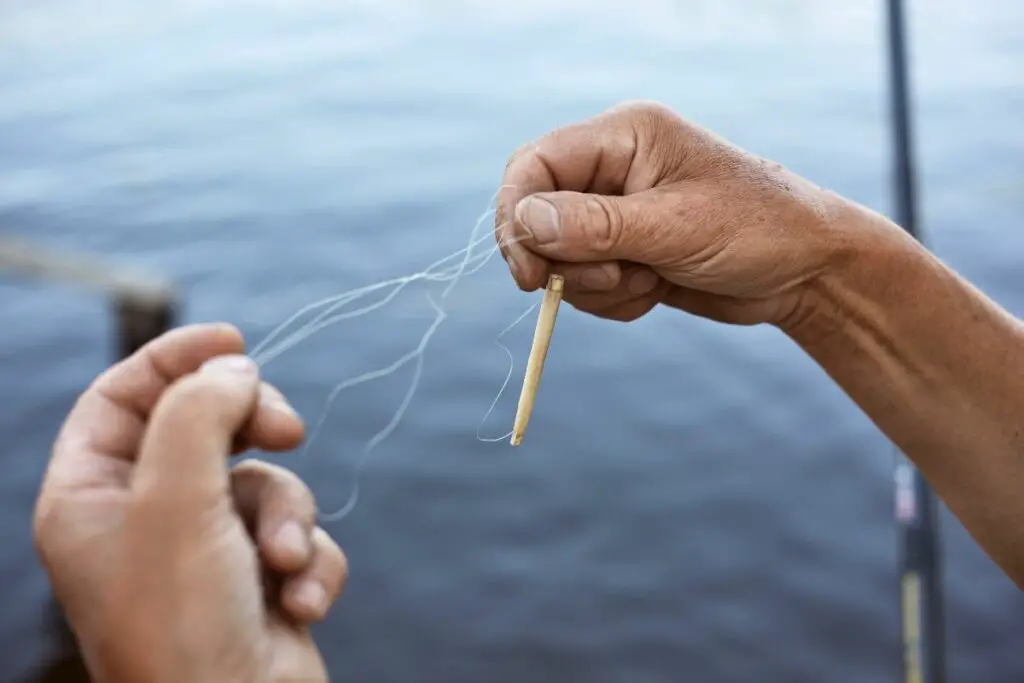
While each knot is different in its own devious manner, there are several methods that will help untangle your fishing line.
The most important thing is to recognize that the fishing line is twisted as soon as possible.
It may be as simple as gently plucking the knot apart or unwinding your line. If you don’t detect the knots right away, they tend to tighten up, and you will be forced to use scissors to cut off parts of the line instead.
In most cases, you’re likely better off cutting the knot out, but this is a pricey solution. Each knot also puts strain and resistance on lines that weren’t built to endure it.
How to Prevent Fishing Line from Curling?
If your line is constantly unraveling from your reel, you should check whether line curling is to blame.
We have previously mentioned that fishing lines develop “memory,” meaning it sets and will begin to take the shape it was placed and eventually curl on your reel.
These curls or spirals are difficult to hold tight against the spool, causing your fishing line to slip off or unwind.
Preventing the fishing line from curling is a skill in itself that focuses on line maintenance. So, here are some tips that will help you stop your fishing line from curling:
- When you load the fishing line onto your reel, make sure that it comes onto the reel in the same direction in which it came off the spool.
- Run the line under warm water. Soaking the line that way will help make it softer, which will straighten the line and reduce the line memory it might have retained.
- Try to apply some line conditioner on the line regularly to keep it smooth and make it last longer. You can purchase line conditioners from any local tackle shop or online.
Related Questions
Why Is Your Fishing Line Loose on the Reel?
Your fishing line is loose on the reel because s there is not enough tension on your reel to hold your line on the spool. If the fishing line is extra loose, particularly on a windy day, it can easily become unspooled, which will hinder your performance.
Why Does Your Fishing Line Keep Tangling?
Your fishing line keeps tangling because of one of three factors: line twisting, a wind knot that hooked itself and tightened, or your line rested for a prolonged period and created twists that curled up on itself.
Why Is Your Fishing Line Twisting?
Your fishing line is twisting because it was spooled on the reel improperly. Spinning reels must be loaded with the line-side spool’s plate facing the front of the reel’s spool. The line exiting the line spool must exit in the same direction as it enters the reel.
Why Is Your New Fishing Line Curly?
Your new fishing line might be curly because it has high memory. When lines that have high memory rest on the spool for some time without use, they take the shape of the spool and start to curl. This is more common with fluorocarbon lines.
Why Does Fishing Line Fall Off from Spinning Reels?
The fishing line falls from spinning reels because it was spooled on the reel backward. The correct way to spool the line on a spinning reel is to spool it in the same direction as it comes off the spool. Another reason is that you’re using too much line.
Helpful Resources
Different Types of Fishing Line Explained
These Are The Fishing Lines I Absolutely Love
- After Testing endless brands and varieties, these are the best Fluorocarbon lines, these are the best Braided lines, and these are the best monofilament fishing lines.
- These are the best Ice Fishing Lines for your money
- These are the fly fishing lines that have never let me down.
- Targeting Trout? These are the best fishing lines for trout. For Bass, use these bass fishing lines.
- Not sure which fishing line to use? Check out these comparisons:
- Going Crappie Fishing? These Crappie Fishing Lines outperform everything else (and their price!)
If you like this article, please share it or pin it, you can find the share buttons below. We will really appreciate it ❤️

